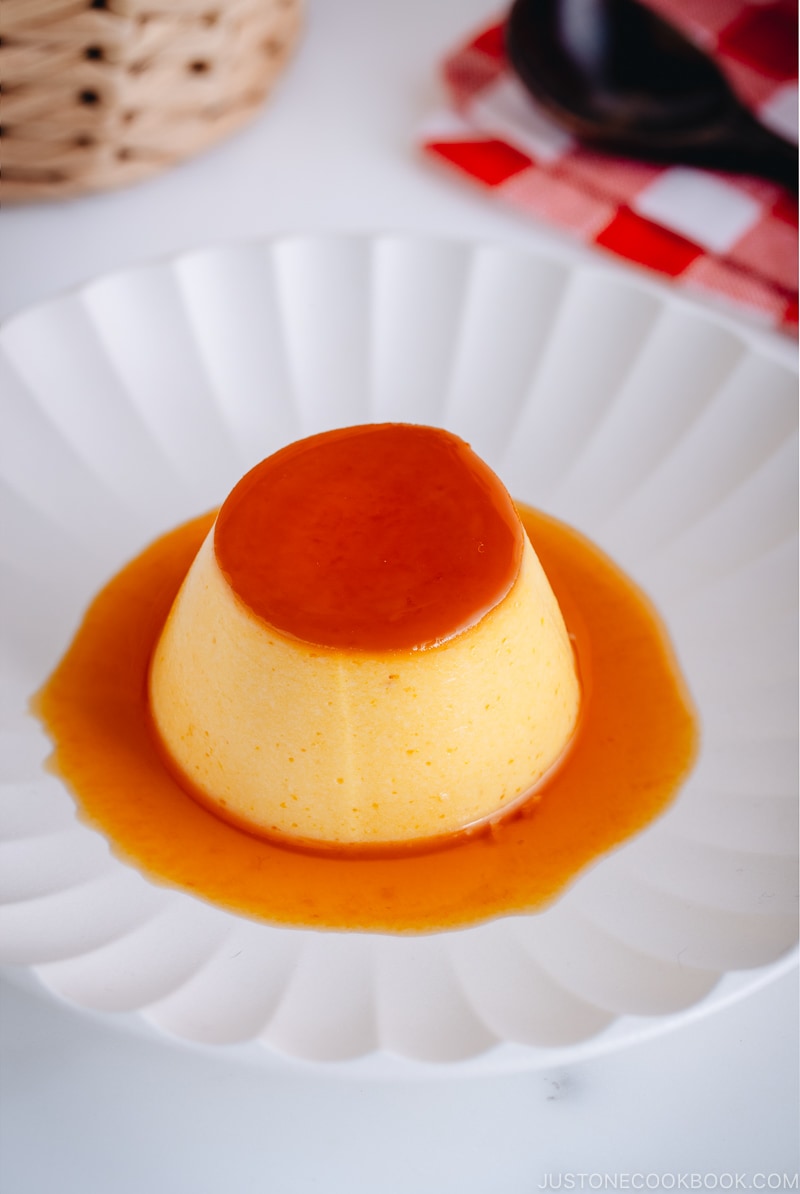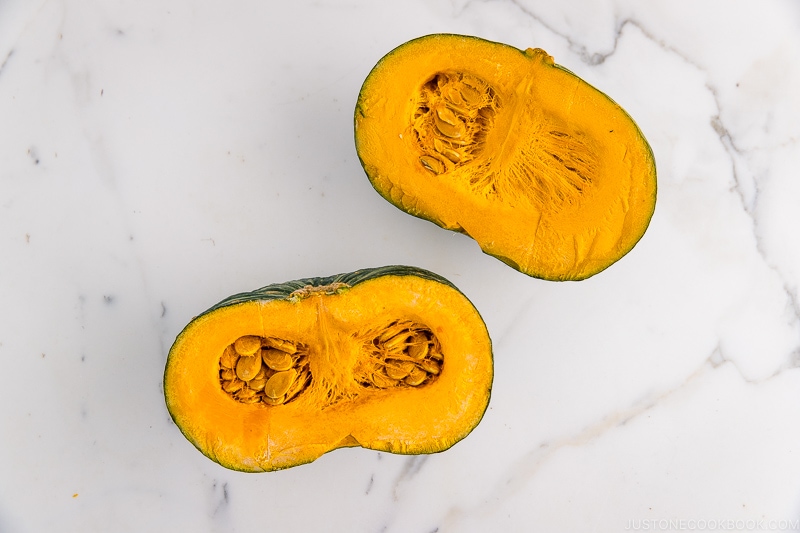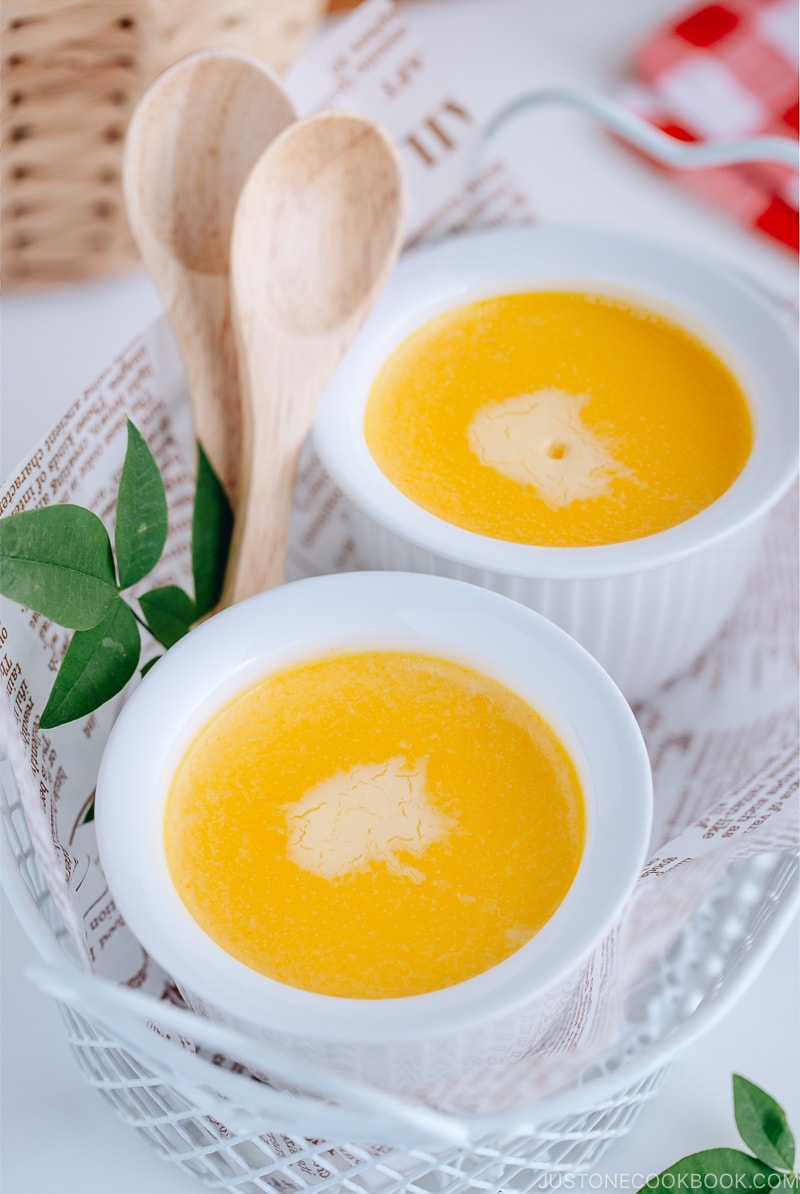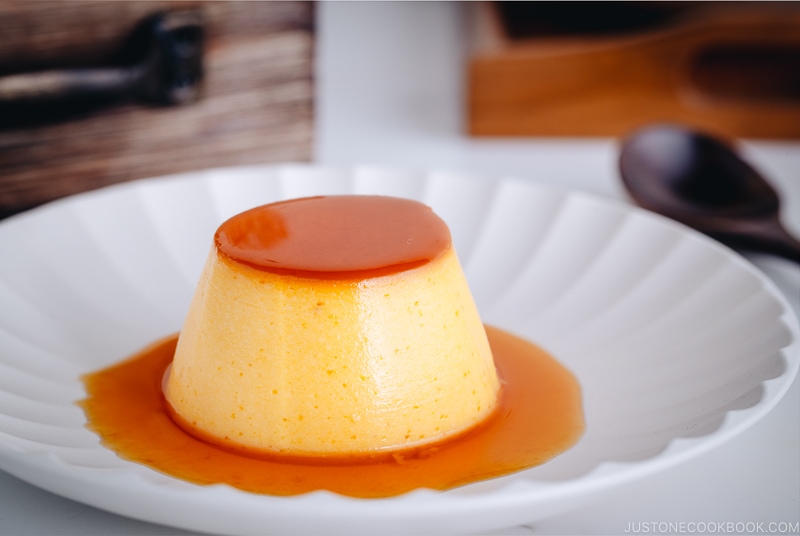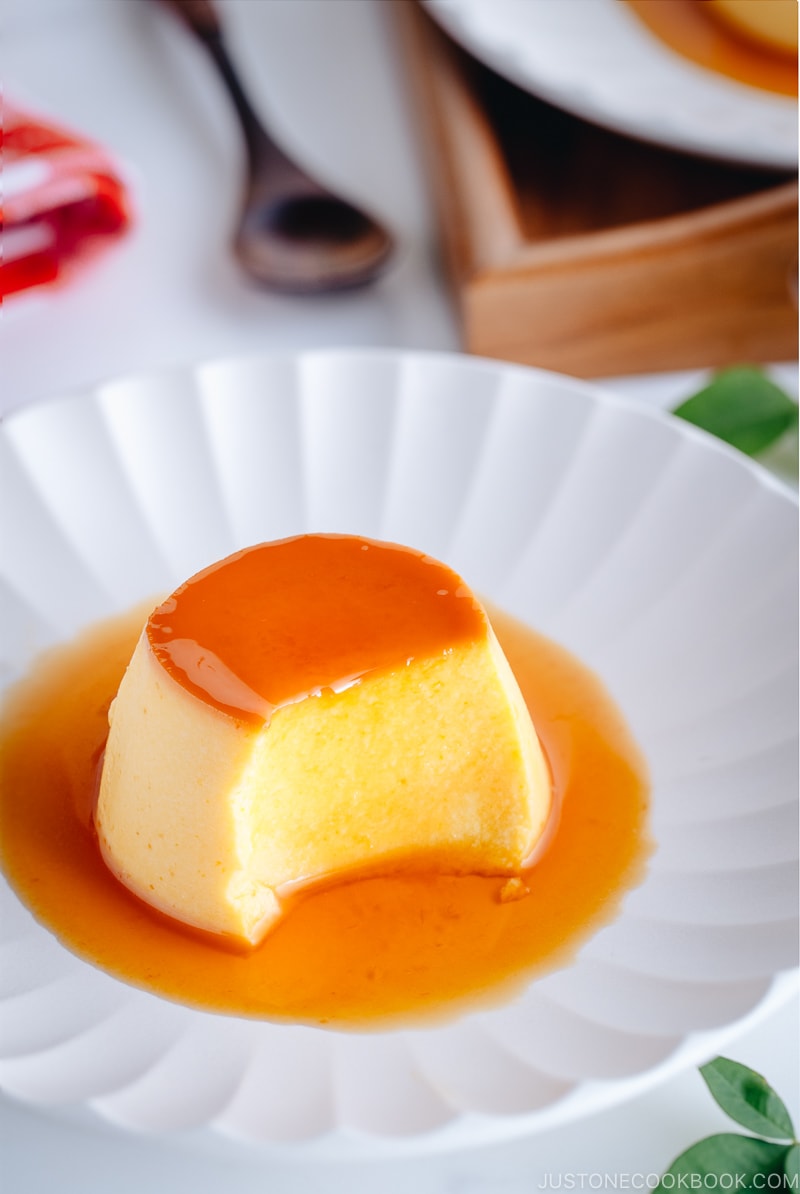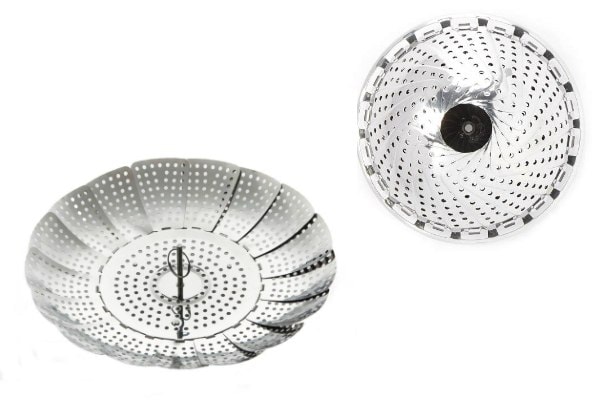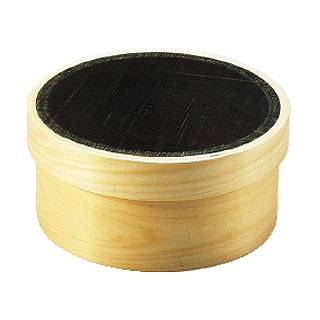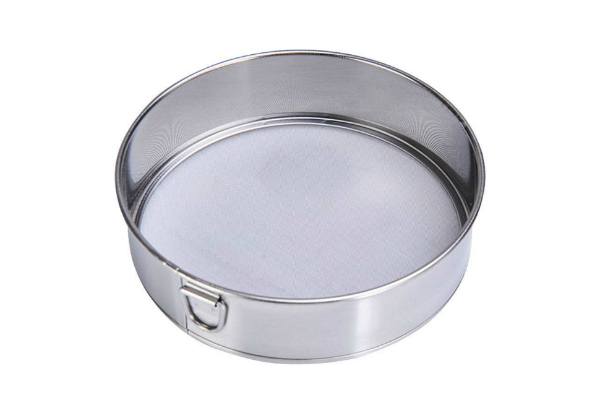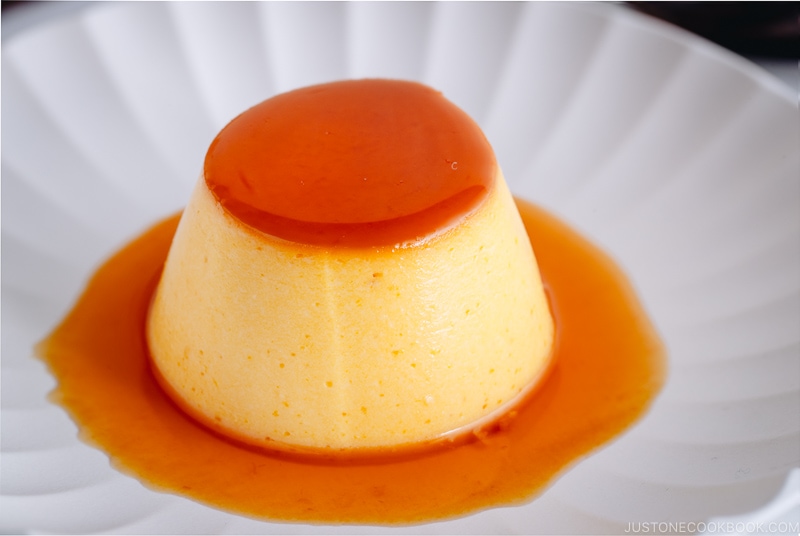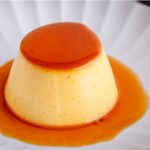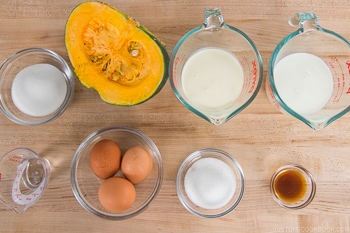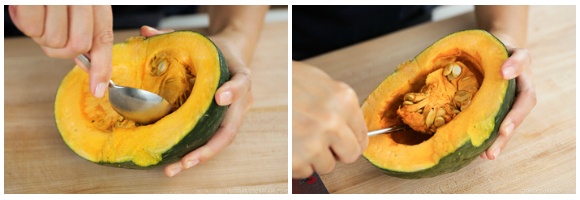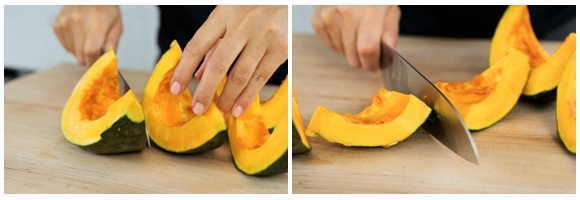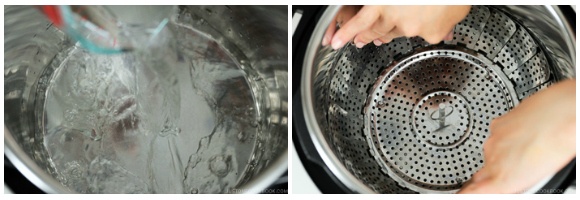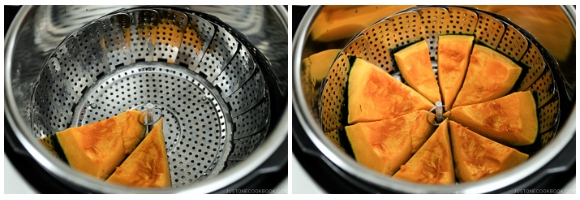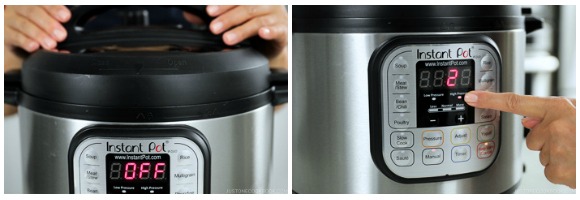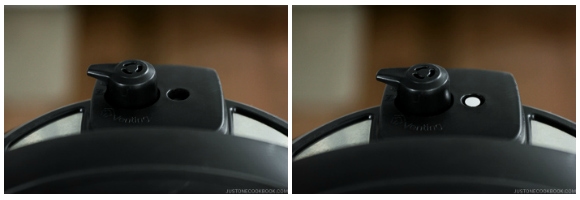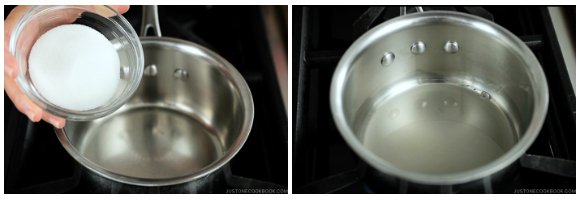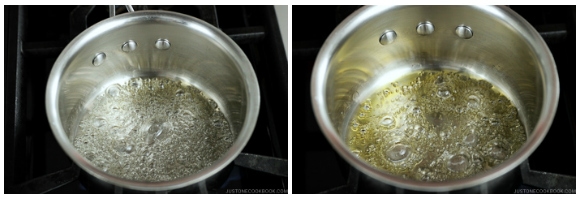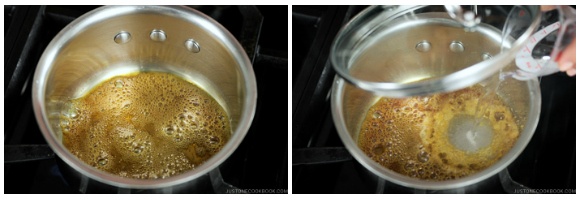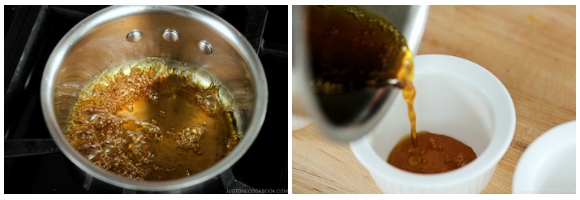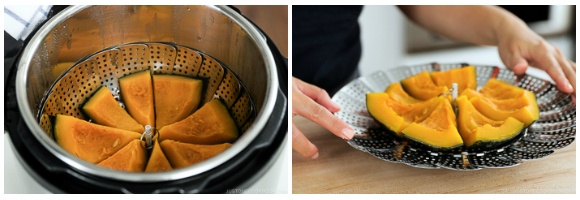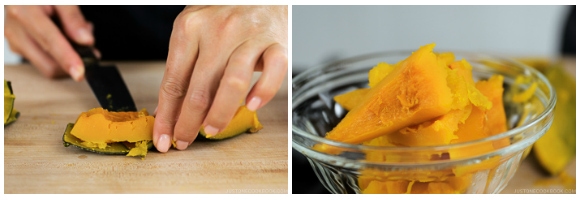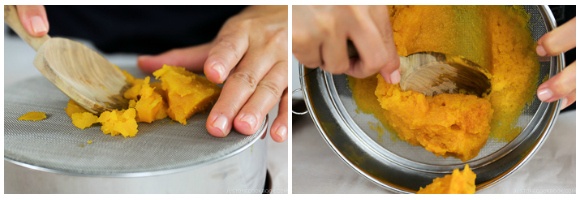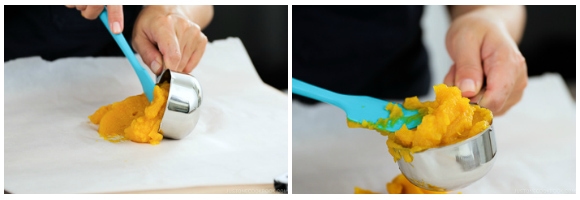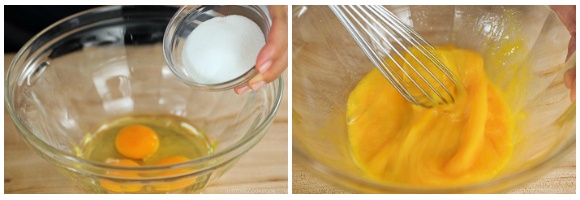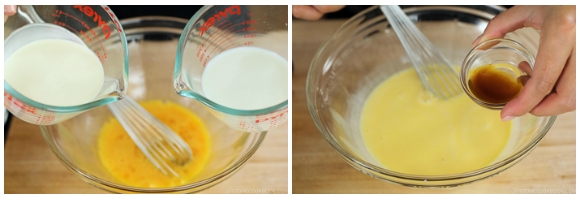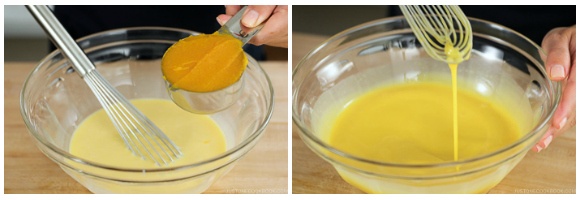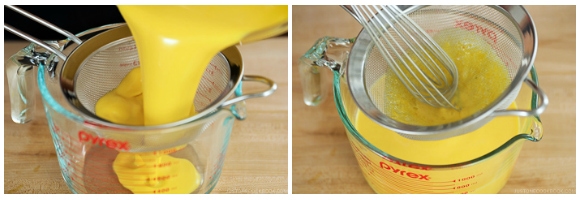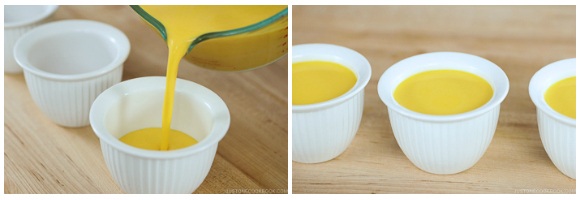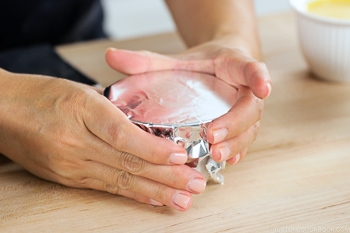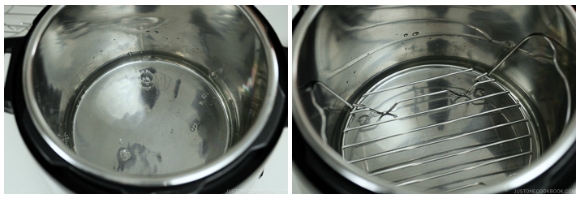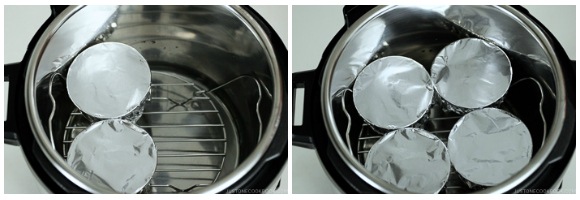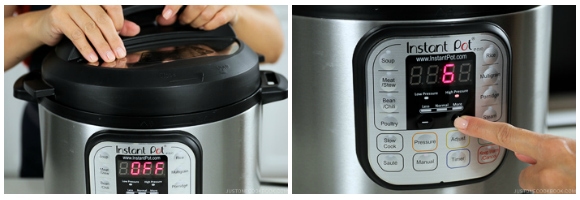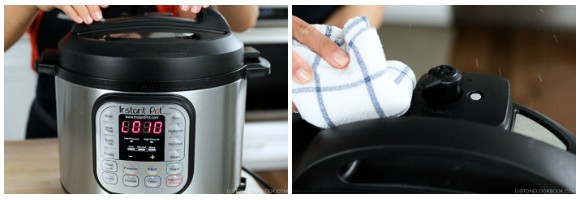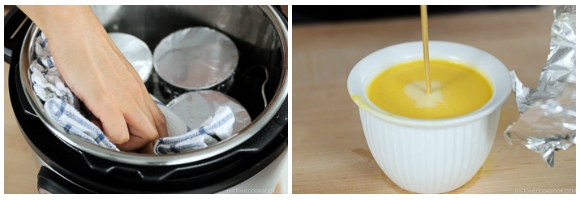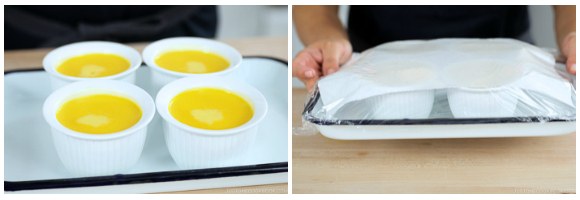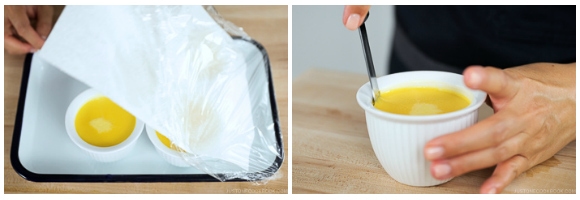Halloween is just around the corner and I wanted to share at least one pumpkin recipe before the holiday. Pumpkins in Japan are called Kabocha (カボチャ) and it is one of the most celebrated flavors in the fall. Over here in the US, I’ve been seeing kabocha (or kabocha squash) being sold alongside pumpkins and other squashes at some local grocery stores and farmers’ markets. Today I’m sharing a recipe for Instant Pot Kabocha Flan (かぼちゃプリン). The golden sweetness and richness of kabocha, when used in an elegant dessert like flan, really highlights how versatile the Japanese pumpkin can be. Now it is time to take out your workhorse Instant Pot and make this kabocha-flavored flan for the season.
What is Kabocha?
It’s called kabocha squash in the US and Japanese pumpkin in Australia. Curious about kabocha? You can read a little bit more about it here on my blog.
Cooking Tips
1. Puree kabocha for the best texture
Pureeing the kabocha is an important step for a smooth and silky texture of this flan. I used a fine mesh sieve (Uragoshiki in Japanese) to puree but you can definitely speed it up with a food processor. It is an extra step, but this helps to pulverize the fibers of the mashed kabocha. Nobody wants to see and bite into strands of fiber in their flan, so don’t skip this step!
2. Use the same size and shaped ramekins
The cooking time varies based on the size of the ramekins you use. For a consistent result, make sure your ramekins are all in the same size and shape. You don’t want to end up with a flan in a smaller ramekin over-cooked and the one in a bigger ramekin under-cooked.
3. Adjust the pressure cooking time
Adjust the cooking time if you’re using a different size ramekin than mine. For my recipe, I used 6-oz ramekins. It took 6 minutes of high-pressure cooking and 10 minutes of natural release. This 10-minute “natural release” is actually a hard stop. Do not wait until the pressure is naturally released. Remember, your flan is being “cooked” during the pre-pressure time, 6 minutes of pressure cooking, and 10 minutes of natural releasing time. This entire time is counted as cooking time.
Holes Are a Big No-No for Flan
What is the number one thing you have to achieve when you make flans? In Japan, it is “a silky texture WITHOUT HOLES”. If you can see visible holes, then your flan is a failure (so harsh!). The reason why flans have very visible holes is either it’s overcooked and/or the heat is too strong.
If you look at my flan above, you can see tiny holes around the edges (a minor failure) but when you see inside the flan (see the picture below), there is no hole. Those tiny holes on the edge were created because they are right next to the ramekin and the heat was probably too direct and strong. You may wonder what is wrong with holes. Well, those holes in the flan give an unpleasant texture, far from the silky smooth texture that you’re after. Therefore, watch out on cooking time and heat distribution. If you have lots of holes, even in the center of the flan, not just the outside, then you are definitely overcooking it. You can either reduce the pressure cooking time or natural release time.
Helpful Cooking Tools
1. Get a collapsible stainless steel steamer basket
The instant pot comes with a steamer basket (wire rack) for steaming, but the gap between wires are bigger and food can easily fall down. This collapsible steamer basket has been my all-time favorite for steaming in the pot or the instant pot. It’s a great tool to have especially if you enjoy steaming vegetables and other food.
2. Strain kabocha for a smooth texture
In Japan, we have a specific kitchen utensil for straining food into a smooth texture and it’s called Uragoshiki (裏ごし器). It’s made of wooden cylinders and a fine mesh made of horsehair traditionally, but in recent years, nylon and metal have been used. This stainless steel fine-mesh sifter can be used as a strainer for starchy food like sweet potatoes and kabocha squash in order to remove the fibers. If you have a food processor, you can use it. I don’t like cleaning the food processor…so I usually use a fine mesh flour sifter and throw it in the dishwasher after use.
How to Prepare Kabocha Flan over the Stovetop
No worries, I have a solution for you. You can steam or boil kabocha on the stovetop or microwave it until tender. Then you can follow all the steps until the pressure cooking process and here’s what you need to do. Step 1: Fill the large skillet or pot with 1-inch water and bring it to a boil. Step 2: Once the water is boiling, turn the heat to the lowest and gently place the ramekins into the skillet/pot. Cover with the lid and steam the flan for 10 minutes. Step 3: Turn off the heat but DO NOT open the lid. Let the flan steam with the remaining heat for another 10 minutes. Step 4: Take out the ramekins and remove aluminum foil. Insert a skewer in the center to see if the custard is set and no liquid coming out. Let cool on the counter until the flan is cool. When they are at room temperature, move to the refrigerator to chill for at least 2 hours, or preferably overnight. This Kabocha Pumpkin Flan recipe is not only luscious, but it’s also a perfect make-ahead dessert to serve for a special occasion. I hope you enjoy it! Wish to learn more about Japanese cooking? Sign up for our free newsletter to receive cooking tips & recipe updates! And stay in touch with me on Facebook, Pinterest, YouTube, and Instagram.
